About the Author
Books
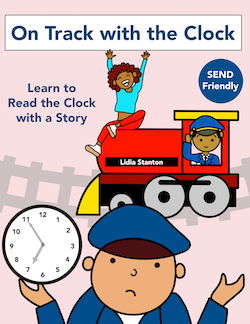
On Track with the Clock: Learn to Read the Clock with a Story
Published: April 16, 2023
This ‘visual story’ book teaches children to read the clock. Although the clock itself is a visual structure on which to count, those with sequential and visual-spatial processing difficulties may crumble under the sudden enormity of the task. Many children have not learned to count in 5s securely, others have not been reminded that it’s all about counting in 5s. Among these will be children with dyslexia, dyscalculia, dyspraxia, ADHD and global learning difficulties who require a different way of learning the clock. They need a back-to-front framework: starting with the minutes, not hours, before developing all remaining time-telling skills.
In this book, the setting is a train station with a jolly-not-so-jolly manager tricked into accepting help from a young passenger who is “fed up with trains not running on time”. The clock literally becomes a rail track. While the station manager thinks he is playing a computer game, things slowly start to make sense.
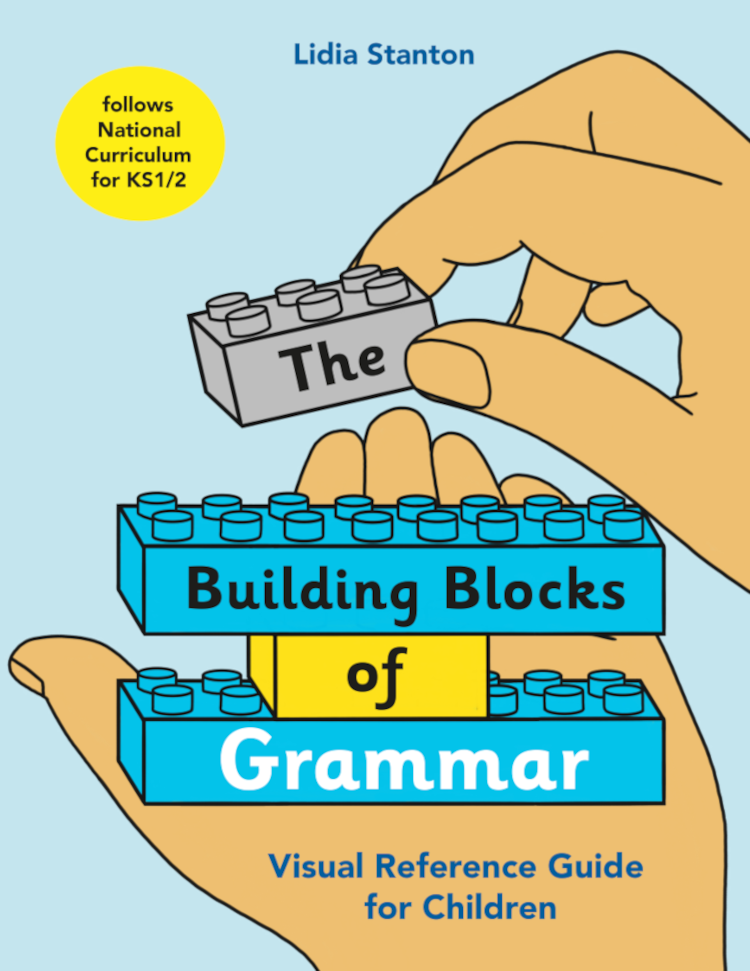
The Building Blocks of Grammar
Published: March 3, 2021
This visual reference guide:
- is a blueprint for constructing and grammatically describing any sentence using words turned into building blocks
- focuses on word and phrase classes, types of/differences between phrases, clauses and sentences, including sentence moods, and addresses some frequently encountered grammatical problems in writing and speaking
- introduces a colour code to grammatical word classes with distinctive colour patterns for word classes that often ‘go together’
- is suitable for any child of primary school age (5-11) as well as many children of secondary school age
- covers the guidelines of the Department for Education for teaching grammar in Key Stage 1 and 2, with all grammatical terms based on the Primary National Curriculum
- offers suggestions for practical activities to complement theoretical grammar instruction
- provides a list of everything you need to start learning grammar with building blocks.
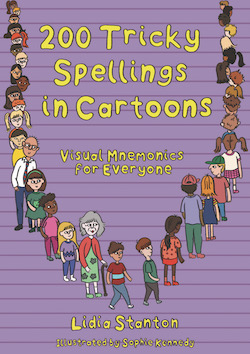
200 Tricky Spellings in Cartoons
Published: January 21, 2021
A spelling book that brings situational humour to 200 tricky words anyone can learn in an intelligent and virtually effortless way. A practical reference manual; black-and-white cartoons can be photocopied to create personalised spelling artwork. Recommended ages 12 - adult. Younger children may require assistance.
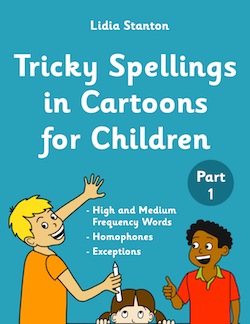
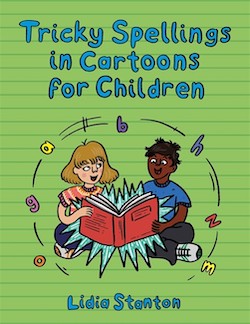
Tricky Spellings in Cartoons for Children (Part 1)
🇬🇧 UK Edition
Published: August 28, 2017
A delightful collection of witty and easy to remember visual hints (mnemonics) to help the child recall tricky spellings, including exceptions and homophones. 264 high- and medium-frequency words that appear in KS1 and KS2 curricula are associated with over 160 creative spelling clues. Ages 5-11.
🇺🇸 USA Edition
Published: January 21, 2021
A colorful book of fun cartoons for elementary kids age 5-11, packed with visual mnemonics demystifying some of the most difficult spellings. The book's visual hints and tricks encourage active learning and help kids to make connections and actively recall hard-to-spell words.
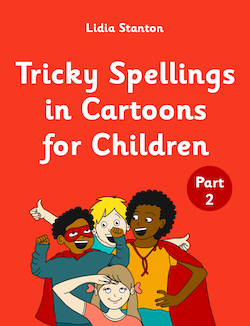
Tricky Spellings in Cartoons for Children (Part 2)
Published: July 20, 2020
Three hundred new spellings in this collection of witty and easy to remember visual hints (mnemonics). High- and medium-frequency words that appear in KS1 and KS2 curricula, homophones, exceptions and common sequences. Ages 5-11.
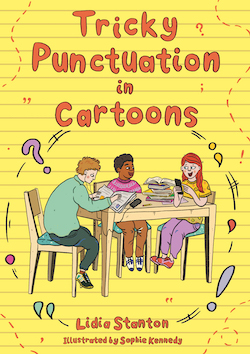
Tricky Punctuation in Cartoons
Published: May 21, 2020
This illustrated punctuation workbook supports students with dyslexia, ADHD or other specific learning difficulties to develop their punctuation skills via inquiry-based learning. Tricky Punctuation in Cartoons complements school literacy programmes and helps equip students who learn differently with additional ways to remember tricky punctuation rules.
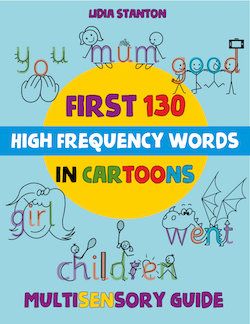
First 130 High Frequency Words in Cartoons: Multisensory Guide
Published: May 12, 2020
The Multisensory Guide provides an ‘at-a-glance’ breakdown of visual hints for learning high frequency words introduced in Year Reception and Year 1. It reveals that each word can be a story hidden inside a cartoon, and that it has a shape that can be recognised. The Activity Sheets and Flash Cards book supplements the guide. It has detachable worksheets that can be displayed around the house.
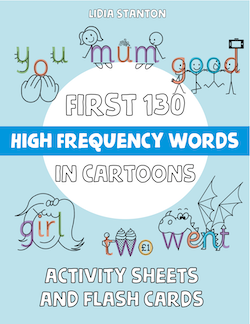
First 130 High Frequency Words in Cartoons: Activity Sheets and Flash Cards
Published: May 12, 2020
The resource focuses on letters (graphemes) – the visual building blocks of written words. Children with dyslexia find it particularly reassuring to have the two instruction systems (sounds and letters; phonemic and graphemic) temporarily separated so they can make better sense of the complex nature of written English. Thankfully, the modified order of HFWs should not cause significant problems when introducing HFWs to the learner, as educators are free to move between different pages while identifying the words that need to be practised
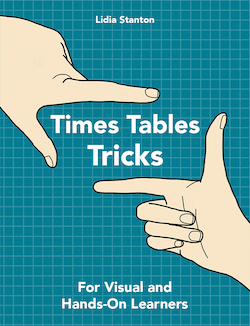
Times Tables Tricks: For Visual and Hands-On Learners
Published: December 4, 2019
This step-by-step guide is for learners of all ages who:
- have tried (without success) rote learning methods based on repetition of whole multiplication facts
- enjoy active learning through discovery and experience
- have gaps in their times tables knowledge
- need fast and foolproof strategies to recall times tables in formal assessments, particularly timed ones
- may have a specific learning difficulty (SpLD), such as dyslexia, dyscalculia and ADD/ADHD
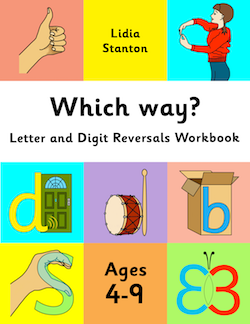
Which way?: Letter and Digit Reversals Workbook
Published: August 28, 2017
A workbook with practical and long-term memory tricks to remind the child ‘which way’ to write a letter or digit, e.g. b/d, p/g/q, 9/g, 6/9. s/z, 5/S, S/3, etc. It adopts a complementary approach to traditional letter formation teaching. Particularly useful for children with dyslexia and dysgraphia. Ages 4-9.

I learn by doing
Published: June 15, 2016
This funny comic book is a take on a ‘whodunnit’ story and a platform for introducing children to multisensory strategies for learning spellings, directions, days of the week, months of the year and other sequences that have to be recalled in order. Ages 6-10.
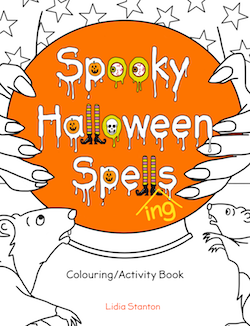
Spooky Halloween Spell(ing)s
Published: Halloween, 2017
This Halloween-themed spelling activity book with colouring pages brings fun to learning tricky spellings. The 30 target words include haunted, cauldron, sorcerer, tombstone and werewolf, but also more frequently used words such as wicked, fright, brain and purple. Working through the pages enables the child to understand what mnemonics (memory triggers) are and how to create them to remember other difficult spellings.
Copyright © 2024 Lidia Stanton. All rights reserved.
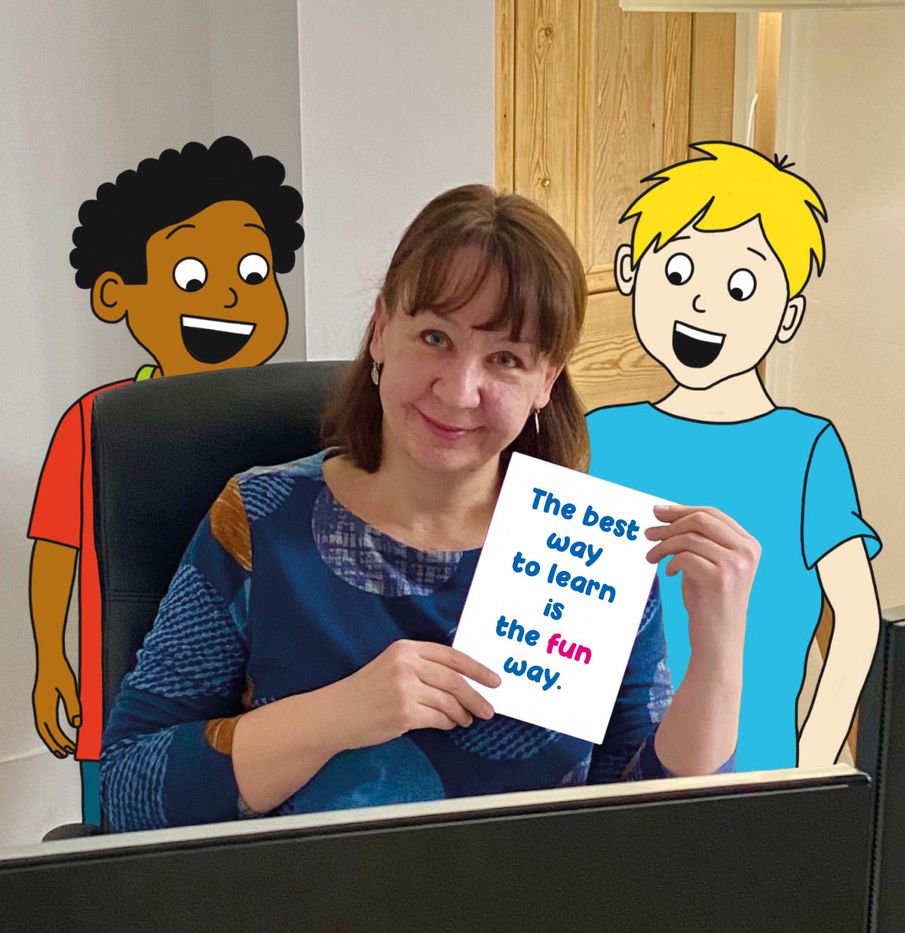
lidia@lidiastanton.com
Dyslexia Ideas
@dyslexiaideas
@lidiastanton11